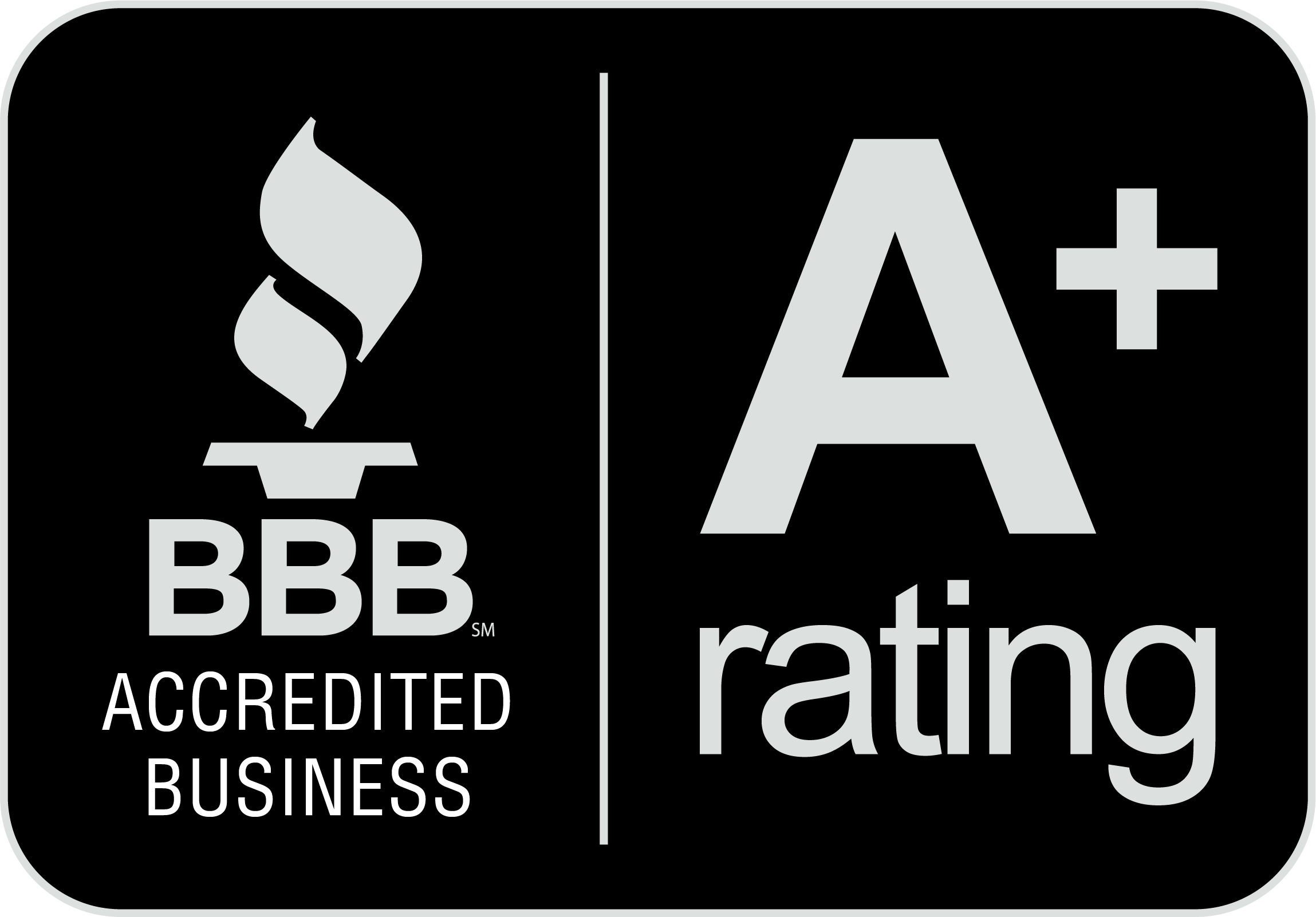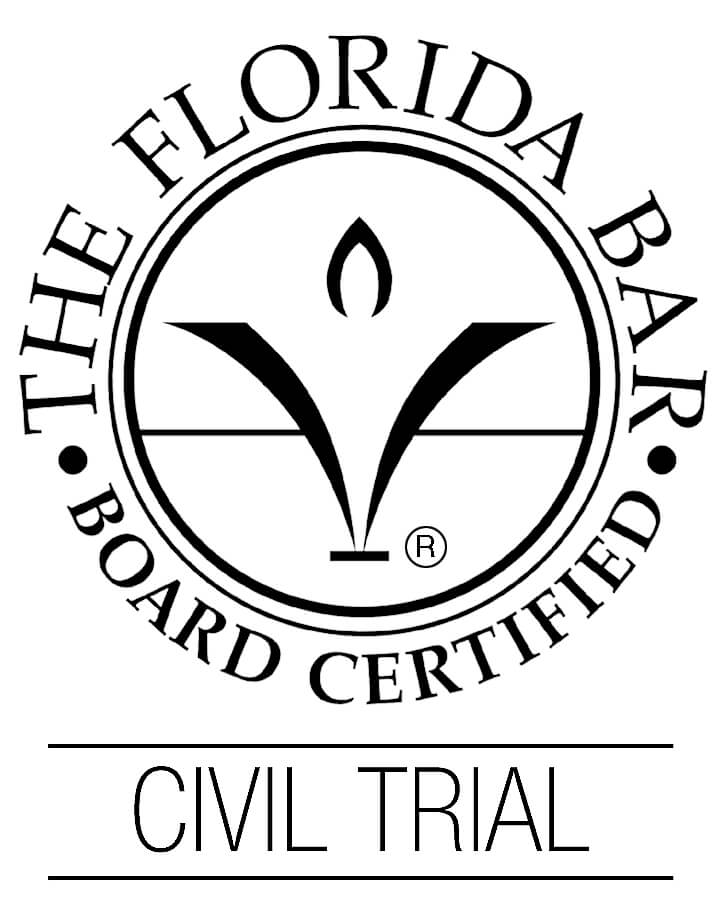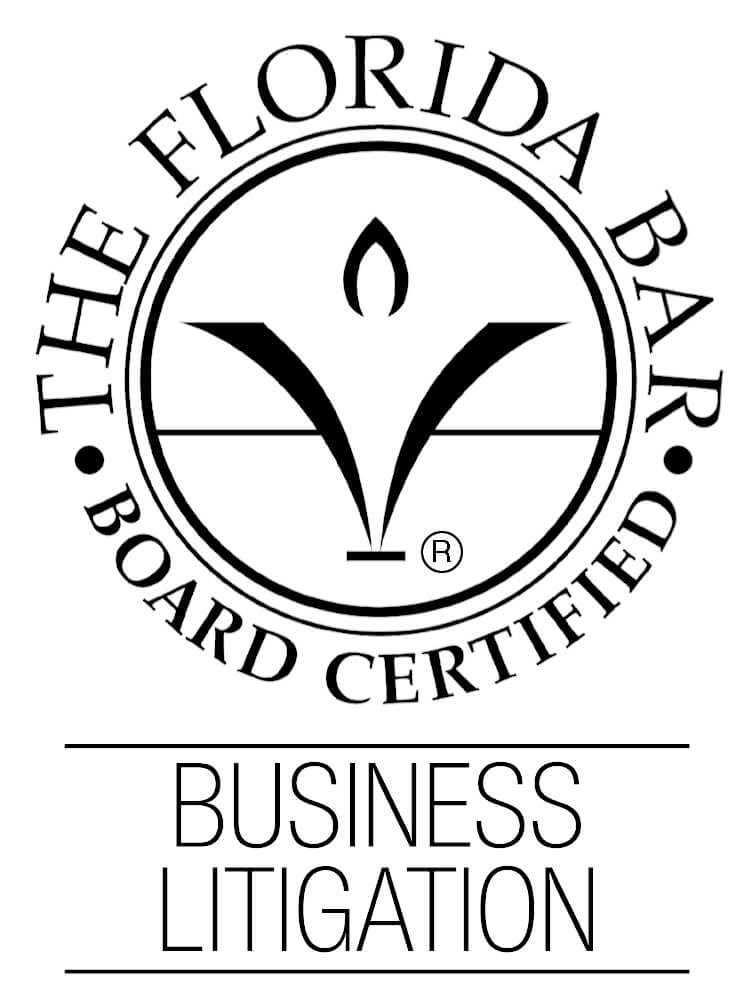In Florida’s humid climate, mold is more than just an uncomfortable coloring on surfaces. It’s a persistent and very real threat to your health and property.
Whether it stems from a storm-damaged roof, an undetected pipe leak, or another water issue, mold can spread quickly and quietly. Homeowners, renters, and business owners often assume mold cleanup is covered by insurance, but many are met with exclusions, delays, or flat-out denials when it comes time to file a claim.
If your insurer isn’t holding up their end of the deal, The Nation Law Firm is here to help. We’ve stood alongside Florida policyholders since 1997, helping them navigate mold damage claims with clarity, confidence, and no upfront costs.
Get started today with our free case evaluation.
Understanding Mold Damage and Insurance Coverage
Mold is rarely covered as a standalone issue in most Florida insurance policies. Coverage for mold damage only applies when the mold results from a sudden and accidental event, like a burst pipe, roof leak after a storm, or appliance failure.
If mold develops over time because of poor maintenance or long-term humidity, your insurance company may deny the claim under policy exclusions for “wear and tear” or “neglect.”
Florida law does not require homeowners to hold mold coverage, but many policies include limited coverage (between $10,000–$50,000) for qualifying situations. If you’re a renter or business owner, you may have similar limitations or need to purchase mold endorsements to ensure coverage.
Common Causes of Mold Growth
Mold thrives in warm, humid environments, making Florida homes and businesses especially vulnerable. Even a small amount of moisture can quickly fuel widespread mold infestations if not addressed promptly.
Here are some of the most common causes of mold in Florida’s warm climate:
- Storm Damage: Leaky roofs, broken windows, and flooded interiors from hurricanes or heavy rains.
- Burst Pipes or Plumbing Leaks: Sudden pipe failures or slow leaks hidden behind walls or under floors.
- Appliance Malfunctions: Leaks from washing machines, dishwashers, or water heaters that go unnoticed.
- Poor Ventilation: Bathrooms, kitchens, and attics with inadequate airflow often retain moisture.
- HVAC Issues: Faulty or poorly maintained air conditioning systems that create condensation buildup.
- Flooding: Standing water from flash floods or clogged drains creates ideal conditions for mold to take root.
Identifying the cause of mold is key to your insurance claim. If you can’t determine the cause, your insurance company may try to claim that the mold stems from wear and tear or neglect, which aren’t covered situations.
Health Risks Associated with Mold
Mold is a serious health hazard, especially for children, older adults, and anyone with respiratory conditions. Short-term exposure to mold can trigger noticeable symptoms, while prolonged exposure may lead to more severe health issues.
Some types of mold, like black mold (Stachybotrys chartarum), release toxic spores that can intensify symptoms and pose greater risks. Warning signs that you may be exposed to mold are:
- Persistent coughing, sneezing, or wheezing
- Nasal congestion and throat irritation
- Skin rashes or irritation
- Eye discomfort or redness
- Worsening of asthma or chronic respiratory conditions
In long-term exposure cases, headaches, fatigue, or difficulty concentrating are common. If you notice signs of mold, it’s best to act quickly before you notice any symptoms.
6 Steps to Take When Mold Damage Occurs
If you discover mold in your home or business, it’s important to act quickly. Here’s what to do:
- Identify and Stop the Source of Moisture: Mold thrives in damp environments. Once you identify the water source, your first priority is closing the entryway.
- Document the Damage Thoroughly: Take clear photos and videos of visible mold, water stains, and damaged areas. Keep a written log of when the damage was discovered and any steps you’ve taken to reference later on.
- Notify Your Insurance Company: Report the damage to your insurer as soon as possible, as waiting too long could jeopardize your claim or give the insurer reason to deny coverage.
- Avoid DIY Cleanup: Avoid cleaning or removing mold yourself before an inspection. It can weaken your claim and, in some cases, may expose you to health risks.
- Keep Records of Expenses: Save receipts for any immediate costs, like dehumidifiers, temporary lodging, or initial water mitigation services, to seek reimbursement later.
- Request a Professional Inspection: Mold claims often require expert documentation. An air quality test or professional remediation quote can help substantiate your claim.
By following the right steps early on, you put yourself in a stronger position to avoid disputes, delays, and denials. If your insurance company isn’t playing fair, The Nation Law Firm can help you fight back for your rightful value.
Challenges in Filing Mold Damage Claims
Mold damage is often more complicated than it seems, both in clean-up and the claims process. Even when damage is severe and clearly linked to a covered event, you might have your insurance provider tell you differently.
Here are the most common challenges Florida policyholders face in mold-related claims:
- Policy Exclusions: Many standard policies limit or exclude mold coverage entirely unless the mold stems directly from a “covered peril,” like a storm or sudden pipe burst.
- Delayed Responses: Insurers may take weeks to start their investigation, which gives mold an opportunity to spread and worsen. This tactic is often intentional, as it gives them more room to argue that the damage falls outside your policy’s scope.
- Disputes Over the Cause: Even if mold falls under a covered event, insurers may argue that it’s caused by long-term moisture, poor maintenance, or neglect.
- Coverage Limits: Some policies cap mold remediation at low amounts ($5,000 or less) even if the actual cleanup costs far more.
- Unrealistic Documentation Demands: Insurers may require excessive documentation, like air quality tests or microbiology reports, before approving claims to discourage policyholders from pursuing their claims.
You can overcome these challenges with proactive action and strong knowledge. The Nation Law Firm can add to your competitive edge, bringing legal experts who understand common hurdles and can position you ahead of them.
Proving Mold Damage in Insurance Claims
Documentation is everything in mold claims. Your provider will need substantial proof that the mold exists, that it’s harmful, and that it resulted from a covered event, not long-term neglect or another disqualifying situation.
Weak evidence creates a risk of denial, which ultimately delays your rightful compensation. To build a strong mold damage claim, you should:
- Photograph the Damage: Take clear, timestamped photos/videos of all visible mold, water damage, and the surrounding areas.
- Talk to an Expert: Certified mold inspectors or remediation specialists can provide professional assessments and written reports to support your claim.
- Request Air Quality Tests: An air quality test can detect mold spores and contamination even if the growth isn’t fully visible. Not only does this strengthen your case, but it also keeps you safe.
- Keep All Receipts and Invoices: Save documents related to emergency repairs, inspections, and cleanup efforts to seek reimbursement later.
If the mold resulted from a burst pipe, roof leak, or storm-related flooding, your priority is to link this event to your policy coverage. Keep this in mind as you gather and preserve evidence, and don’t hesitate to reach out to our team for support.
Addressing Mold Remediation and Repairs
Mold remediation is rarely a simple cleanup. It’s a multi-phase process that, although stressful, must be handled carefully.
The first step is to identify the full extent of the damage. Mold often grows out of sight, behind walls, under flooring, or in HVAC systems. If the source is difficult to determine, you may need a specialist to bring moisture meters, infrared cameras, and air sampling equipment.
Next comes containment. To prevent the spread of spores, the affected area is sealed off using plastic sheeting and negative air pressure systems. Professionals will then remove porous materials that can’t be salvaged, such as drywall, carpet, or insulation.
Once contaminated materials are removed, the area is cleaned and disinfected using specialized antimicrobial treatments. Surfaces are scrubbed, air purifiers may be used to improve air quality, and the entire area is dried using dehumidifiers to prevent recurrence.
Then, repairs begin. The reconstruction can be costly, and there’s a chance that your provider argues against the necessity of this or prior steps. Experts, thorough documentation, and support from our team can help you proceed forward, overcome challenges, and reach the compensation you deserve.
Legal Recourse for Denied Mold Damage Claims
Insurance providers claim that they act in your best interest, but that’s not always the case. In mold damage claims, especially, insurers treat mold claims with skepticism, citing policy exclusions, delayed reporting, or long-term neglect as reasons to deny coverage.
If your mold damage claim is denied, underpaid, or unnecessarily delayed, you have the right to push back. You can appeal their decision, answer their questions, and recover the compensation your policy entitles you to.
The Nation Law Firm can help you evaluate the denial, gather necessary documentation, and prepare the strongest case. If your home has been damaged and your claim dismissed, you don’t have to accept “no” as the final answer, especially with a local, powerful Florida law firm at your side.
16 Mold Damage Prevention Tips You Need to Know
Not all mold growth is preventable, especially after sudden disasters, but there are proactive steps you can take to reduce the risk and severity of damage:
Moisture Control and Humidity Management Tips
- Use dehumidifiers in high-humidity rooms and during Florida’s rainy seasons.
- Keep indoor humidity below 60%, ideally between 30–50%, and use a hygrometer to monitor levels.
- Install exhaust fans in bathrooms, kitchens, and laundry rooms to vent moisture outside.
- Run air conditioning consistently in hot months to reduce indoor moisture.
Routine Maintenance and Home Care Tips
- Fix leaks immediately, as even slow drips from pipes, faucets, or AC units can create hidden mold problems.
- Seal windows and doors to prevent rainwater intrusion during storms.
- Maintain your roof and gutters to keep water away from your foundation and attic.
- Inspect plumbing annually, especially in older homes with outdated systems.
Mold-Resistant Building Materials Tips
- Use mold-resistant drywall (also called green board) in high-moisture areas.
- Apply mold-inhibiting paint, particularly in bathrooms, kitchens, and basements.
- Avoid carpet in moisture-prone areas, like basements or near exterior doors.
Post-Storm and Seasonal Practices Tips
- Check for water intrusion after every major storm, as even minor leaks can go unnoticed.
- Dry out wet areas within 24 to 48 hours after flooding, storms, or plumbing incidents.
- Keep an emergency water cleanup kit (wet/dry vac, fans, disinfectants) on hand in case of a leak or flood.
Storage and Property Habits Tips
- Don’t store items directly on basement floors, especially cardboard boxes or paper goods.
- Ensure proper drainage around your home, sloping soil away from the foundation.
How Attorneys Assist with Mold Damage Claims
When insurance companies deny, delay, or underpay mold-related claims, The Nation Law Firm can be your strongest advocate. When your mold claim involves disputes over policy language, coverage limitations, or the source of the mold, our team has already prepared for the challenge and can overcome it swiftly.
Our expert attorneys are here to help you find the best solution as soon as possible. We can:
- Review your policy in detail, identifying what should be covered and where your insurer may be acting unfairly.
- Coordinate expert inspections, including mold assessments, remediation quotes, and causation analysis to strengthen your claim.
- Challenge bad faith practices, including mischaracterizations of the damage or unjustified delays.
- Negotiate a fair settlement that reflects the true scope of your damages, including secondary issues like water intrusion or health-related impacts.
- Represent you in litigation, if needed, to pursue the full compensation you’re entitled to under Florida law.
You don’t have to navigate the insurance claims process alone. Get started with The Nation Law Firm today for no upfront costs with a free case evaluation.
Frequently Asked Questions
What types of mold damage are typically covered by homeowners’ insurance?
Most policies cover mold damage if it results from a sudden and accidental event, such as a burst pipe, storm, or appliance leak. Mold from long-term neglect or gradual wear and tear is usually excluded from coverage.
How can I prove that mold damage resulted from a covered event like a burst pipe or storm?
You’ll need documentation linking the mold to the original incident, such as photos of the water damage, plumber’s reports, repair invoices, or weather reports confirming the storm.
What steps should I take immediately after discovering mold damage in my home?
Act quickly. Stop the source of moisture if possible, take photos of the mold and the surrounding area, contact your insurance company, and consider speaking to a remediation specialist to prevent further spread.
How can I document mold damage for an insurance claim?
Use photos, videos, professional mold inspection reports, and air quality test results. Keep all receipts related to cleanup and repairs, and maintain records of your communications with the insurer.
What are the health risks associated with mold exposure?
Mold can trigger respiratory problems, skin irritation, asthma attacks, and allergic reactions, especially for those with weakened immune systems, allergies, or pre-existing health conditions. It’s important to request air quality tests to ensure your structure is safe.
What should I do if my insurance company denies my mold damage claim?
Review the denial letter carefully, gather supporting documentation, and speak with our team to evaluate your options and potentially file an appeal.
How can an attorney help with mold damage insurance disputes?
The Nation Law Firm can assess your coverage, challenge claim denials, coordinate expert inspections, and negotiate or litigate to secure fair compensation for your losses.
Does insurance cover the cost of professional mold remediation?
If the mold resulted from a covered event, most policies will cover reasonable remediation costs, though limits and exclusions may apply. Always check the fine print or consult a legal professional.
Can I file a claim for mold damage if it results from long-term neglect?
Generally, no. Insurers often deny mold claims caused by poor maintenance or neglect, as they don’t fall under standard policy coverage. However, some exceptions may apply, so it’s worth having your case reviewed.
What evidence is most important for a successful mold damage claim?
Strong claims include before-and-after photos, expert inspection reports, air quality tests, repair estimates, and documentation proving the source of the mold was a covered event.




